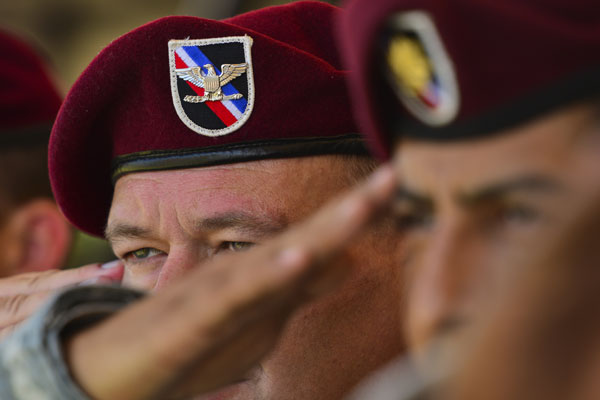What’s Next for the U.S. Army?
Steven Bucci /
This month, the Association of the United States Army will convene for its annual meeting and exposition. As it considers the end of the Iraqi conflict and the drawdown in Afghanistan, one question will be on everyone’s mind: Where do we go from here?
For the last 11 years, the Army has borne the largest burden of the wars in Iraq and Afghanistan. The Marines have been there with them, but the size and composition of the Army made them the major contributor to the events known as the “War on Terror.” It has been a long and difficult slog.
Every service is positioning itself for the future. This is what happens whenever a conflict winds down. For the Air Force, the Navy, and the Marine Corps, the call is easier. The Obama Administration’s new strategic “pivot” to Asia has given them a compass to follow. The wide-open expanses of air and water that make up the theater in the Asia–Pacific are their natural elements. The Army, however, sees the pivot and the declaration of now large, or long land wars and no nation building and has to ask, “What do you want us to prepare for?”
The Army is doing a lot of soul searching and a lot of strategic head scratching to determine how to size itself, how to equip itself, and how to prepare its troops. In Army schools, instructors are already declaring certain scenarios as off limits for worthwhile discussions. Majors are pronouncing to captains and lieutenants: “We will never do that again” and “That is not the Army’s mission anymore.”
The Army has never been great at prognostication. After Vietnam, it deliberately stripped out its accumulated knowledge of counter insurgency. In the midst of the Kosovo intervention, student colonels at the U.S. Army War College declared that the Army had no business even thinking about nation building and other complex contingencies; their only legitimate role was to be a giant mailed fist with which the nation fought its biggest wars. These are all nice thoughts.
The Army is right to feel uneasy about its future, but the answer may be simpler that it thinks. The Army needs to simultaneously be ready to fight big wars and complex-but-smaller contingency operations. It must be capable of agile maneuvers, concentrated firepower, and the nuance of interaction with foreign civilian leaders. It must be ready for both an Operation Desert Storm and an Operation Iraqi Freedom-style conflict. The Army needs capabilities and leaders that understand and can be applied across the spectrum of conflict.
The solution is simple—just not easy.
Particularly in a time of fiscal austerity, as it appears the Budget Control Act and sequestration are driving the Department of Defense, this sort of institutional flexibility is extraordinarily difficult. Yet it is not impossible.
The Army has always prided itself on being able to perform any mission it is assigned. There is no doubt that this will be the case in the future. The question is at what cost? Drop the big war capabilities and you end up with Kassarine Pass (World War II) or Task Force Smith (Korea). Drop an understanding of insurgencies and you repeat the first two years of conflict in Iraq, particularly in Fallujah and Karbala/Najaf.
However the Army leadership determines to restructure itself, and on what types of warfare it chooses to focus, it must keep in mind a few (unfortunate) facts. The U.S. seldom gets to define the parameters of the next war. Its size, location, and intensity will remain a mystery until it starts (and sometimes even longer).
The Army should be encouraged to open its sights to include as much of the potential strategic, operational, and tactical landscape as possible, and to retain any and all lessons that were learned. It might seem like a dilution of effort, but it is far better than starting from scratch the next time they are called upon.

